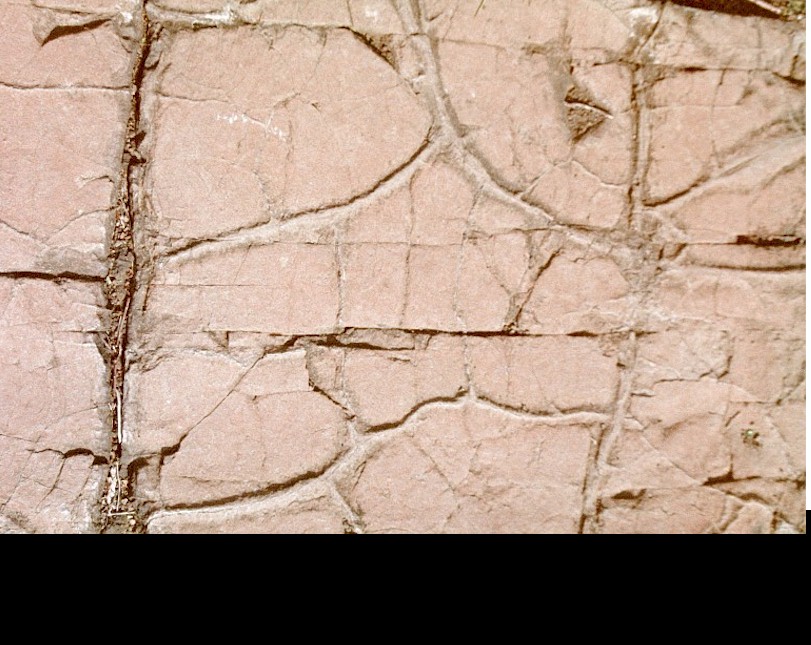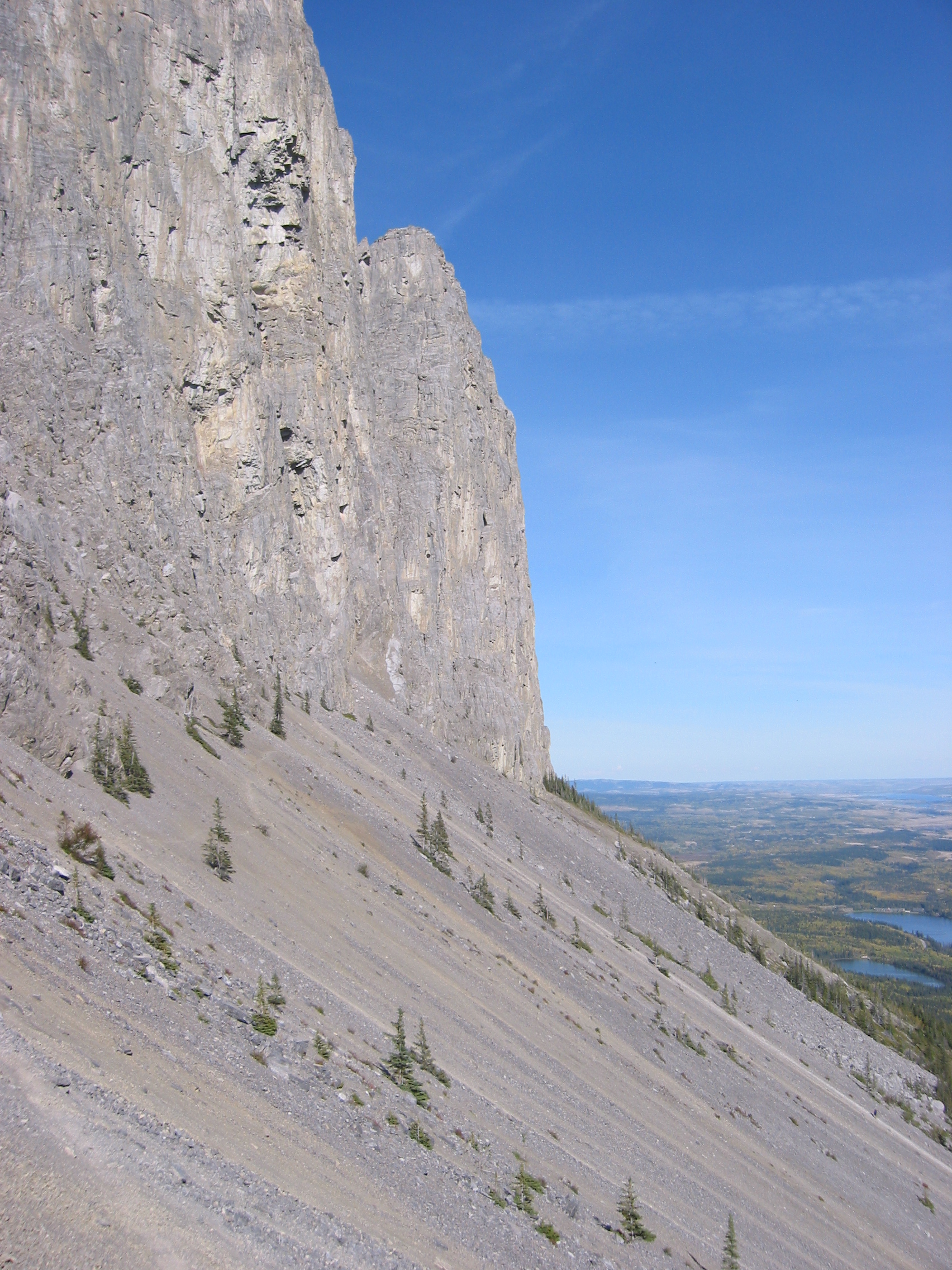|
Sleeping Giant State Park
Sleeping Giant (also known as the Blue Hills and Mount Carmel), (''Hobbomock'' in Quinnipiac), is a rugged traprock mountain with a high point of , located north of New Haven, Connecticut. A prominent landscape feature visible for miles, the Sleeping Giant receives its name from its anthropomorphic resemblance to a slumbering human figure as seen from either the north or south. The Giant is known for its expansive clifftop vistas, rugged topography, and microclimate ecosystems. Most of the Giant is located within Sleeping Giant State Park. The mountain is a popular recreation site: over of hiking trails traverse it including of the Quinnipiac Trail. Quinnipiac University is located at Mount Carmel's foot in Hamden. Geography The Sleeping Giant, long by wide, is located in Hamden with its eastern edge falling into Wallingford. The Giant's profile features distinct "head," "chin," "chest," "hip," "knee," and "feet" sections topographically represented by traprock outcrops ... [...More Info...] [...Related Items...] OR: [Wikipedia] [Google] [Baidu] |
Hamden, Connecticut
Hamden is a New England town, town in New Haven County, Connecticut, United States. The town's nickname is "The Land of the Sleeping Giant (Connecticut), Sleeping Giant". The town is part of the South Central Connecticut Planning Region, Connecticut, South Central Connecticut Planning Region. The population was 61,169 at the 2020 United States census, 2020 census. History The peaceful tribe of Quinnipiacs were the first residents of the land that is now Hamden; they had great regard, awe and veneration for the Blue Hills Sleeping Giant Mountain. In spring 1638, Theophilus Eaton and the Reverend John Davenport (Puritan), John Davenport purchased, from Quinnipiac Chief Momauguin, the land that would become the settlement of New Haven Colony. Later that November, Eaton expanded the settlement by acquiring 130 square miles from Mattabesset Chief Montowese. This tract extended the original settlement 10 miles north along the Quinnipiac River, with an additional 8 miles to the east a ... [...More Info...] [...Related Items...] OR: [Wikipedia] [Google] [Baidu] |
Long Island Sound
Long Island Sound is a sound (geography), marine sound and tidal estuary of the Atlantic Ocean. It lies predominantly between the U.S. state of Connecticut to the north and Long Island in New York (state), New York to the south. From west to east, the sound stretches from the East River and the Throgs Neck Bridge in New York City, along the North Shore of Long Island, to Block Island Sound. The sound forms part of the Intracoastal Waterway. A mix of freshwater from tributaries, and seawater, saltwater from the Atlantic Ocean, Long Island Sound is at its widest point and varies in depth from . Shoreline Major Connecticut cities on the Sound include Stamford, Connecticut, Stamford, Norwalk, Connecticut, Norwalk, Bridgeport, Connecticut, Bridgeport, New Haven, Connecticut, New Haven, and New London, Connecticut, New London. Cities on the New York side of the Sound include Rye (city), New York, Rye, Glen Cove, New York, Glen Cove, New Rochelle, New York, New Rochelle, North Hem ... [...More Info...] [...Related Items...] OR: [Wikipedia] [Google] [Baidu] |
Scree
Scree is a collection of broken rock fragments at the base of a cliff or other steep rocky mass that has accumulated through periodic rockfall. Landforms associated with these materials are often called talus deposits. The term ''scree'' is applied both to an unstable steep mountain slope composed of rock fragments and other debris, and to the mixture of rock fragments and debris itself. It is loosely synonymous with talus, material that accumulates at the base of a projecting mass of rock, or talus slope, a landform composed of talus. The term ''scree'' is sometimes used more broadly for any sheet of loose rock fragments mantling a slope, while ''talus'' is used more narrowly for material that accumulates at the base of a cliff or other rocky slope from which it has obviously eroded. Scree is formed by rockfall, which distinguishes it from colluvium. Colluvium is rock fragments or soil deposited by rainwash, sheetwash, or slow downhill creep, usually at the base of gentle ... [...More Info...] [...Related Items...] OR: [Wikipedia] [Google] [Baidu] |
Volcanic
A volcano is commonly defined as a vent or fissure in the crust of a planetary-mass object, such as Earth, that allows hot lava, volcanic ash, and gases to escape from a magma chamber below the surface. On Earth, volcanoes are most often found where tectonic plates are diverging or converging, and because most of Earth's plate boundaries are underwater, most volcanoes are found underwater. For example, a mid-ocean ridge, such as the Mid-Atlantic Ridge, has volcanoes caused by divergent tectonic plates whereas the Pacific Ring of Fire has volcanoes caused by convergent tectonic plates. Volcanoes resulting from divergent tectonic activity are usually non-explosive whereas those resulting from convergent tectonic activity cause violent eruptions."Mid-ocean ridge tectonics, volcanism and geomorphology." Geology 26, no. 455 (2001): 458. https://macdonald.faculty.geol.ucsb.edu/papers/Macdonald%20Mid-Ocean%20Ridge%20Tectonics.pdf Volcanoes can also form where there is stretching a ... [...More Info...] [...Related Items...] OR: [Wikipedia] [Google] [Baidu] |
Extrusive
Extrusive rock refers to the mode of igneous volcanic rock formation in which hot magma from inside the Earth flows out (extrudes) onto the surface as lava or explodes violently into the atmosphere to fall back as pyroclastics or tuff. In contrast, intrusive rock refers to rocks formed by magma which cools below the surface.Jain, Sreepat (2014). ''Fundamentals of Physical Geology''. New Delhi, India: Springer. . The main effect of extrusion is that the magma can cool much more quickly in the open air or under seawater, and there is little time for the growth of crystals. Sometimes, a residual portion of the matrix fails to crystallize at all, instead becoming a natural glass like obsidian. If the magma contains abundant volatile components which are released as free gas, then it may cool with large or small vesicles (bubble-shaped cavities) such as in pumice, scoria, or vesicular basalt. Other examples of extrusive rocks are rhyolite and andesite. Texture The texture o ... [...More Info...] [...Related Items...] OR: [Wikipedia] [Google] [Baidu] |
Basalt
Basalt (; ) is an aphanite, aphanitic (fine-grained) extrusive igneous rock formed from the rapid cooling of low-viscosity lava rich in magnesium and iron (mafic lava) exposed at or very near the planetary surface, surface of a terrestrial planet, rocky planet or natural satellite, moon. More than 90% of all volcanic rock on Earth is basalt. Rapid-cooling, fine-grained basalt is chemically equivalent to slow-cooling, coarse-grained gabbro. The eruption of basalt lava is observed by geologists at about 20 volcanoes per year. Basalt is also an important rock type on other planetary bodies in the Solar System. For example, the bulk of the plains of volcanism on Venus, Venus, which cover ~80% of the surface, are basaltic; the lunar mare, lunar maria are plains of flood-basaltic lava flows; and basalt is a common rock on the surface of Mars. Molten basalt lava has a low viscosity due to its relatively low silica content (between 45% and 52%), resulting in rapidly moving lava flo ... [...More Info...] [...Related Items...] OR: [Wikipedia] [Google] [Baidu] |
Jurassic
The Jurassic ( ) is a Geological period, geologic period and System (stratigraphy), stratigraphic system that spanned from the end of the Triassic Period million years ago (Mya) to the beginning of the Cretaceous Period, approximately 143.1 Mya. The Jurassic constitutes the second and middle period of the Mesozoic, Mesozoic Era as well as the eighth period of the Phanerozoic, Phanerozoic Eon and is named after the Jura Mountains, where limestone strata from the period were first identified. The start of the Jurassic was marked by the major Triassic–Jurassic extinction event, associated with the eruption of the Central Atlantic magmatic province, Central Atlantic Magmatic Province (CAMP). The beginning of the Toarcian Age started around 183 million years ago and is marked by the Toarcian Oceanic Anoxic Event, a global episode of Anoxic event, oceanic anoxia, ocean acidification, and elevated global temperatures associated with extinctions, likely caused by the eruption of the Kar ... [...More Info...] [...Related Items...] OR: [Wikipedia] [Google] [Baidu] |
Triassic
The Triassic ( ; sometimes symbolized 🝈) is a geologic period and system which spans 50.5 million years from the end of the Permian Period 251.902 million years ago ( Mya), to the beginning of the Jurassic Period 201.4 Mya. The Triassic is the first and shortest period of the Mesozoic Era and the seventh period of the Phanerozoic Eon. Both the start and end of the period are marked by major extinction events. The Triassic Period is subdivided into three epochs: Early Triassic, Middle Triassic and Late Triassic. The Triassic began in the wake of the Permian–Triassic extinction event, which left the Earth's biosphere impoverished; it was well into the middle of the Triassic before life recovered its former diversity. Three categories of organisms can be distinguished in the Triassic record: survivors from the extinction event, new groups that flourished briefly, and other new groups that went on to dominate the Mesozoic Era. Reptiles, especially archosaurs, were the ... [...More Info...] [...Related Items...] OR: [Wikipedia] [Google] [Baidu] |
Fault-block
Fault blocks are very large blocks of rock, sometimes hundreds of kilometres in extent, created by tectonic and localized stresses in Earth's crust. Large areas of bedrock are broken up into blocks by faults. Blocks are characterized by relatively uniform lithology. The largest of these fault blocks are called crustal blocks. Large crustal blocks broken off from tectonic plates are called terranes. Those terranes which are the full thickness of the lithosphere are called microplates. Continent-sized blocks are called variously ''microcontinents, continental ribbons, H-blocks, extensional allochthons and outer highs.'' Because most stresses relate to the tectonic activity of moving plates, most motion between blocks is horizontal, that is parallel to the Earth's crust by strike-slip faults. However vertical movement of blocks produces much more dramatic results. Landforms (mountains, hills, ridges, lakes, valleys, etc.) are sometimes formed when the faults have a large ve ... [...More Info...] [...Related Items...] OR: [Wikipedia] [Google] [Baidu] |
Traprock 1
{{disambig ...
Traprock or trap rock may refer to: * Trap rock, form of igneous rock exhibiting polygonal vertical fractures * Traprock Important Bird Area, Queensland, Australia * Trap Rock River, Michigan, USA * Walter E. Traprock, pseudonym of American architect and author George Shepard Chappell * Trap metal, a fusion genre sometimes called "Trap rock" in rare instances See also * Petroleum trap * Trap music and Rock music Rock is a Music genre, genre of popular music that originated in the United States as "rock and roll" in the late 1940s and early 1950s, developing into a range of styles from the mid-1960s, primarily in the United States and the United Kingdo ... [...More Info...] [...Related Items...] OR: [Wikipedia] [Google] [Baidu] |
West Rock Ridge
West Rock Ridge or West Rock of south-central Connecticut, is a long trap rock mountain ridge located on the west side of New Haven with a high point of at High Rock, also known as York Mountain. The ridge forms a continuous line of exposed cliffs visible from metropolitan New Haven and points west. West Rock Ridge is part of the narrow, linear Metacomet Ridge which extends from Long Island Sound near New Haven north through the Connecticut River Valley of Massachusetts to the Vermont border.Farnsworth, Elizabeth J"Metacomet-Mattabesett Trail Natural Resource Assessment." 2004. PDF file. Cited Nov. 20, 2007. West Rock Ridge is popular for recreation and known for its microclimate ecosystems, rare plant communities, and expansive views from cliffs that tower up to above the surrounding landscape.DeLorme Topo 6.0. Mapping Software. DeLorme, Yarmouth, Maine The ridge is traversed by a network of hiking trails including the Regicides Trail, whose northern terminus begins as a sp ... [...More Info...] [...Related Items...] OR: [Wikipedia] [Google] [Baidu] |







